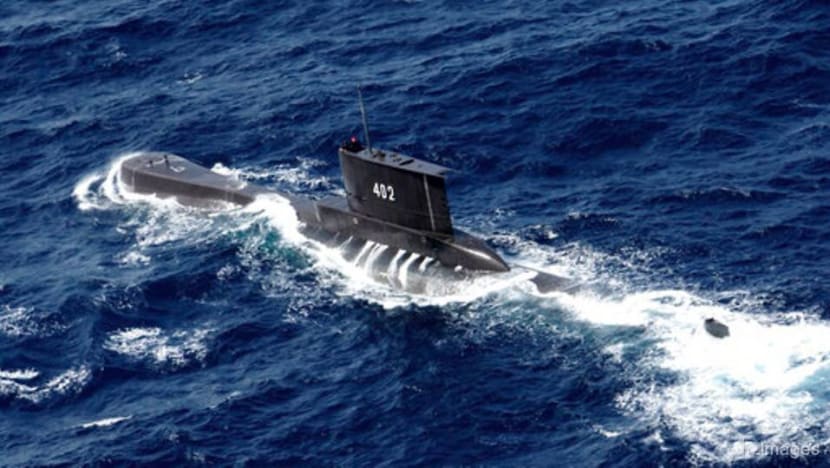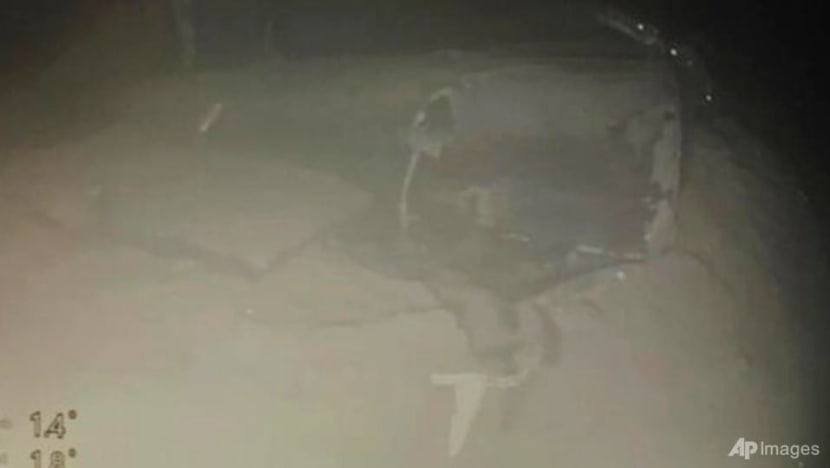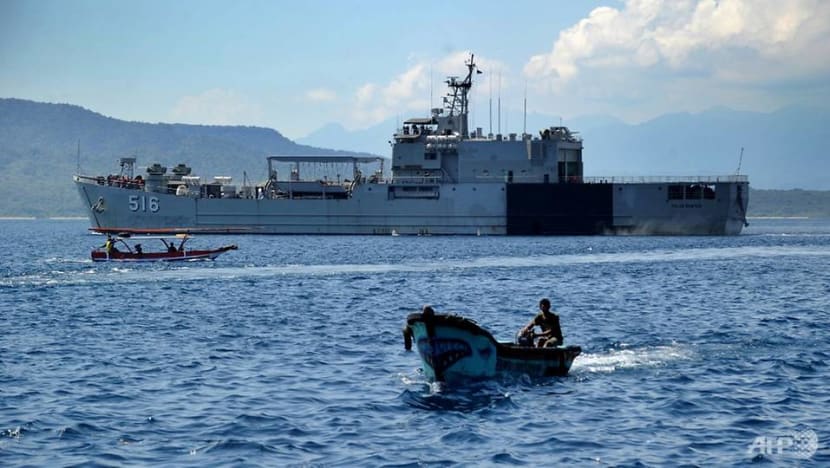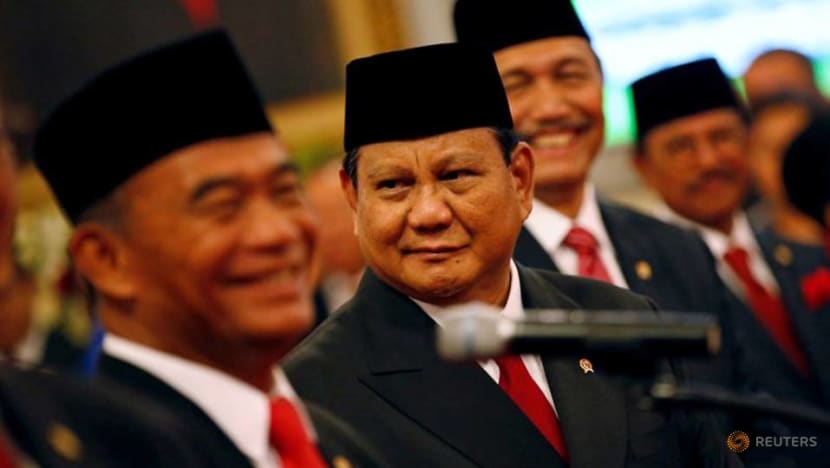Difficult to balance operational costs and hardware purchases: Analysts on ageing military equipment in Indonesia

Indonesian Navy submarine KRI Nanggala sails in the waters off Tuban, East Java, Indonesia, as seen in this aerial photo taken from Indonesian Navy helicopter of 400 Air Squadron, in this Oct 6, 2014 photo. (Photo: AP/Eric Ireng)
JAKARTA: The sinking of the Indonesian submarine KRI Nanggala 402 has drawn attention to the potential challenges of operating ageing military equipment in the Southeast Asian country.
This issue is complicated by the need to strike a balance between allocating funds for operations versus new hardware, said analysts interviewed by CNA.
The diesel-powered submarine had been in service with the Indonesian Navy for almost 40 years when it lost contact during a torpedo drill last Wednesday (Apr 21). On Sunday, the authorities declared that the vessel sank and all 53 onboard have been killed.

This was the third time an ageing Indonesian military asset has met with a mishap within 12 months.
In June last year, a 33-year-old BAE Hawk 209 fighter jet crashed into a residential area in the Sumatran province of Riau. The pilot managed to eject in time.
A month later, the 41-year-old KRI Teluk Jakarta 541 sank after it was hit with bad weather in the Bali Sea. All 55 crew members manning the amphibious landing craft managed to evacuate.
“These incidents are just the tip of the iceberg and they underscore a bigger problem, that our defence sector is in serious need of modernisation,” Mr Muhammad Haripin, a defence and security researcher from the Indonesian Institute of Sciences (LIPI) told CNA.
MILITARY EQUIPMENT IN SHORT SUPPLY
Given the vastness of the country, Indonesia requires more hardware to protect its sovereignty, even if they are ageing ones, said observers.
Before the sinking of KRI Nanggala 402, Indonesia had five submarines along with 31 high-speed warships and 156 patrol ships. This is actually inadequate for an archipelagic country with 3.1 million sq km of territorial waters, said Mr Haripin.
The need to maintain this number of naval assets seems to be the reason why ageing weaponries and equipment have not been retired, he added.
“Because our military equipment is in such short supply and our budget is limited, we keep using ageing military equipment. There are also cases where we bought used fighter jets and ships instead of buying new ones ... With the same amount of money, we can buy more of them,” he said.

Mr Beni Sukadis, a senior researcher at defence and security consultancy, Marapi Consulting said from a safety perspective, using old equipment should be fine as long as it is properly maintained.
“But we have to make sure that the equipment does not exceed its expected lifespan. A ship can be overhauled and completely retrofitted with new engines, weaponries and electronics but we have to be wary of the integrity of the equipment’s structure,” he said.
READ: Indonesian president sends condolences to families of crew on doomed submarine
“Old equipment has more risk of breaking apart which can lead to catastrophic incidents. The structure may have weakened over the years and manufacturers sometimes no longer produce parts for some of their older models. This is why technicians are sometimes forced to use reproductions and copies of lesser quality.”
Mr Sukadis noted that the cost to maintain military equipment also increases as they get older. “There will be a point where the cost to maintain and the risk of operating the equipment is so great, it makes more sense to decommission it and buy a new one,” he said.
BUDGETARY CONSTRAINTS
The issue is complicated by budgetary constraints.
For this year, the country has earmarked 137 trillion rupiah (US$9.46 billion) for the military. However, the majority of the budget goes to paying the salaries of 800,000 soldiers and civilian staffers as well as other operational expenses.
This leaves the military with a budget of 9.4 trillion rupiah to modernise its ageing hardware. “If we divide this sum between the three branches of the military, the figure becomes really small,” Mr Sukadis said.
“How to balance buying new equipment and keep the day to day operations going is tricky. The military has to prioritise certain things. As long as we don’t have enough budget, we will keep using old equipment and incidents like this will continue to occur.”
Defence researcher, Mr Haripin noted that Indonesia is actually setting aside more money for the military. Back in 2011, military spending only stood at 44 trillion rupiah, which means that in the last 10 years the country’s defence budget has more than tripled.
“This shows that the various presidents and administrations we have had, all were committed to addressing the issue of modernising our ageing equipment,” he said. “But the budget is still not enough considering Indonesia’s size and strategic position.”

Defence Minister Prabowo Subianto said that the government has to be careful not to spend too much on the military at the expense of people's welfare.
“We have been prioritising development and prosperity (of the Indonesian people), so (some military equipment) haven’t been modernised,” he told a press conference on Apr 22.
“Weaponries are expensive. In fact, they can be very expensive. This is why we must strike a balance between people’s welfare and defence.”
Mr Subianto said that the KRI Nanggala 402 mishap has provided impetus for the government to modernise its ageing fleet.
“Now that it is urgent, we will modernise our weaponries. I believe in the near future we can modernise our weaponries for all branches of the military,” he said.
“The president asked me a year ago to formulate a 25-year masterplan which will give ourselves total defence capability. We have completed (the masterplan). We will invest more without affecting efforts to develop people’s welfare.”












